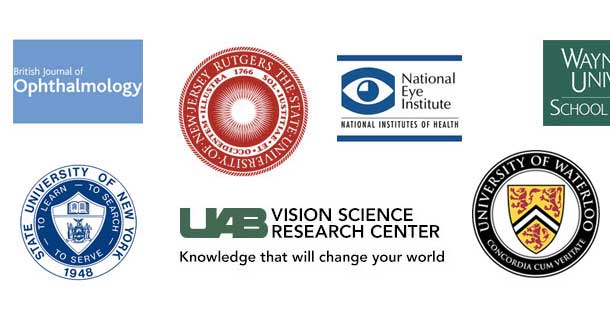The Two Stages Of Your Myopia
Myopia first started out as a strain symptom, from too much close-up focus. This is where a responsible and educated practitioner could have helped with prevention, since this form of myopia is easily cured.
Medical science does not dispute this – even if the local optometrist, trained to dispense lens prescriptions, and dependent on the profit of his sales, disagrees. In Clinical Research we take a look at how you can easily verify everything we talk about here.

We will refer to this science journal and publication search tool a few times on this page, to make it easier for you to take a look at external and impartial (to this site) verifications of the discussion.
NITM, Or “Near Work Induced Transient Myopia” Is Myopia Stage One.
NITM is a well established concept in vision science. Let’s look at a study by the State University of New York, College of Optometry:
The relation between myopia and near work has been reasonably well established in humans56789 and in animal models.101112 This includes the environmental factor of near work-induced transient myopia (NITM),5131415 which refers to the small, transient, pseudomyopic shift in the far point of the eye after a period of sustained near work.” (source)
If you search the scholarly literature search engine of Google, you will find hundreds of these studies, all clearly demonstrating that sustained close-up focus causes this temporary myopia symptom. Here is a link to the Google Scholarly search results for NITM.
As the very term NITM suggests, it is transient myopia.
It isn’t until glasses are prescribed for this early symptom of just up to -1.5 diopters, that you develop the second stage of your myopia:
Lens-Induced Myopia Is Myopia Stage Two.
In juvenile tree shrews, a minus-power lens placed in front of the eye produces increased axial elongation and a myopic shift in refractive state that compensates for the power of the lens.” (source)
The University of Alabama, Department of Vision Sciences published one of the many hundreds of studies, demonstrating the effects of minus lenses (the glasses you wear today), on the eye.
In this particular study tree shrews were used, due to their eyes being very similar to human eyes.
You can find many more of these studies, ranging from mice to monkeys to birds, all showing the catastrophic effects on distance vision, when a minus lens is placed in front of the eye. A term that is used throughout these studies, for over 40 years now, is lens-induced myopia. And there is no argument about it – if you put a minus lens in front of any eye like our own, myopia increases.
The problem here is that eventually the eye begins to grow longer. This is a bad development, and can cause eventual retinal detachment and blindness.
And this type of myopia takes much more care and strategy to reverse, than NITM – if more practitioners would catch the first stage of myopia, we would not have today’s myopia epidemic at all (which currently affects over 2 billion people!).
Glasses Create A Dangerous Artificial Focal Plane.
Glasses allow you to ignore the strain symptom. They create an artifical focal plane, changing where the light focuses in your eye – moving the focal plane backwards, compensating for axial growth. What does that mean, the glasses compensating for what your eye did, to reduce strain? Of course your eye will have to continue to grow longer. It becomes a vicious cycle.
Eventually progressive myopia will find a balance, depending on individual physiology and levels of close-up strain.
Industry Profits Dictate The Dogma Of “Incurable Myopia”
It is predictable, straightforward, and profitable to prescribe a pair of glasses or contact lenses.
LASIK surgery is no different from glasses, in that it creates a focal plane change (which again will be compensated for by the eye). It is easier for the consumer and the practitioner to prescribe a correction, and far more profitable as well:
The graph above is the past five year stock trend for Essilor, a 16 billion dollar per year French corrective lens manufacturer. What would happen to that stock trend, if we began managing NITM and educated the public about lens-induced myopia?
Most practitioners even if they know about the alternative, avoid the pitfalls of rehabilitation. It is challenging and and less profitable than selling lenses.
Rehabilitation Can Repair Your Healthy Eyesight.
Rehabilitation is the conscious choice to actively manage eye strain, the cause of myopia. It is possible to reverse course through targeted strain reduction, positive stimulus, and prescription adjustments.
Myopia Rehabilitation Is A Viable Strategy To Reduce Myopia.
Here we don’t make money selling lenses. Instead, we give you the tools to rehabilitate your eyesight.
To gauge the effectiveness of the #endmyopia Method for Myopia Rehabilitation, visit the support support forum.
For some highlights from participant experiences, take a look at the reviews page:
All forum participation is unedited and uncensored.
Everyone participating, except one-on-one clients, posts their questions in the forum (except for matters they / you may prefer to keep to an e-mail).
There is a lot in the forum. However, if you just want to get started improving your own eyesight, take a look at the Vision Improvement Course. Or, for more about the process of rehabilitation, go to the next page of this introduction:











